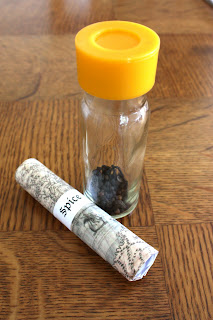Following on from my previous remarks here is another entry from Wikipedia
Trace is one of the most important concepts in Derridian Deconstruction. In the 1960s, Derrida used this word in two of his early books, namely “Writing and Difference” and “Of Grammatology”. The English word “trace” was first used by Gayatri Chakravorty Spivak; in her famous preface to “Of Grammatology”, she wrote “I stick to ‘trace’ in my translation, because it “looks the same” as Derrida’s word; the reader must remind himself of at least the track, even the spoor, contained within the French word”[1]. Derrida, however, does not positively or strictly define trace, and denies the possibility of such a project. Indeed, words like “différance”, “arché-writing”, “pharmakos/pharmakon”, and especially “specter”, carry almost the identical meaning in many other texts by Derrida. His refusal to apply only one name to his concepts is a deliberate strategy to avoid a certain sort of metaphysics.[citation needed] For detailed analysis, check “Of Grammatology”, Translator’s Preface.[citation needed]
Trace can be seen as an always contingent term for a "mark of the absence of a presence, an always-already absent present", of the ‘originary lack’ that seems to be "the condition of thought and experience". Trace is a contingent unit of the critique of language always-already present: “language bears within itself the necessity of its own critique”[2]. Deconstruction, unlike analysis or interpretation, tries to lay the inner contradictions of a text bare, and, in turn, build a different meaning from that: it is at once a process of destruction and construction. Derrida claims that these contradictions are neither accidental nor exceptions; they are the exposure of certain “metaphysics of pure presence”, an exposure of the “transcendental signified” always-already hidden inside language. This “always-already hidden” contradiction is trace.
Metaphysics, Logocentrism, Differance and Trace
To this day, the best way of learning about Deconstruction is to read Derrida in original. Still, we will try to present a short exposition of what “trace” is and it relates to the whole Derridian project.
Derrida’s philosophy is chiefly concerned with metaphysics, although he does not define it rigorously, and takes it to be “the science of presence”. In his own words:
Derrida finds the root of this metaphysics, which he calls “metaphysics of pure presence, in logos, which is internal to language itself. He calls this “Logocentrism”, which is a tendency towards definitive truth-values through forced closure of structures. In his belief, it is the structure of language itself that forces us into metaphysics, best represented through truth-values, closures, speech as valorized by Socrates in Phaedrus. In fact, according to Derrida, Logocentrism is so all-pervasive that the mere act of opposing it cannot evade it by any margin. On the other hand, Derrida finds his Nietzschean hope (his own word is “affirmation") in heterogeneity, contradictions, absence etc. To counter the privileged position of the speech (parole) or the phonè, he puts forward a new science of grammé or the unit of writing: grammatology. Unlike structuralists, Derrida does not see language as the one-to-one correspondence between signifier and signified [for a detailed critique of the structuralist project, read Sign, Structure, and Play in Human Sciences, at [1]; to him, language is a play of identity and difference, an endless chain of signifiers leading to other signifiers. In spite of all the logocentric tendencies towards closure, and truth-values, language, or text for that matter, always contradicts itself. This critique is inherent in all texts, not through a presence, but an absence of a presence long sought by logocentric visions. Influenced by some aspects of Freudian psycho-analysis, Derrida presents us the strategy of Deconstruction, an amalgamation of Heidegger’s concept of Destruktion and Levinas’s concept of the Other. Deconstruction as a strategy tries to find the most surprising contradictions in texts, unravel it, and built over it. Instead of finding the truth, the closure, the steadfast meaning, it finds absence of presence, loophole, freeplay of meanings etc. (For a more detailed analysis of Deconstruction, read the Wikipedia article Deconstruction). It is this absence of presence that is termed as ‘trace’ by Derrida.The history of metaphysics, like the history of the West, is the history of these metaphors and metonymies. Its matrix—if you will pardon me for demonstrating so little and for being so elliptical in order to bring me more quickly to my principal theme—is the determination of being as presence in all the senses of this word. It would be possible to show that all the names related to fundamentals, to principles, or to the center have always designated the constant of a presence--- eidos, arché, telos, energia, ousia, aletheia, transcendentality, consciousness, or conscience, God, man, and so forth.[5]









